Two gringos trying our best not to be the shittiest of expats while we work our way around the world.
Don't wanna be here? Send us removal request.
Text
LSE Recipe 2: Papaya Mousse
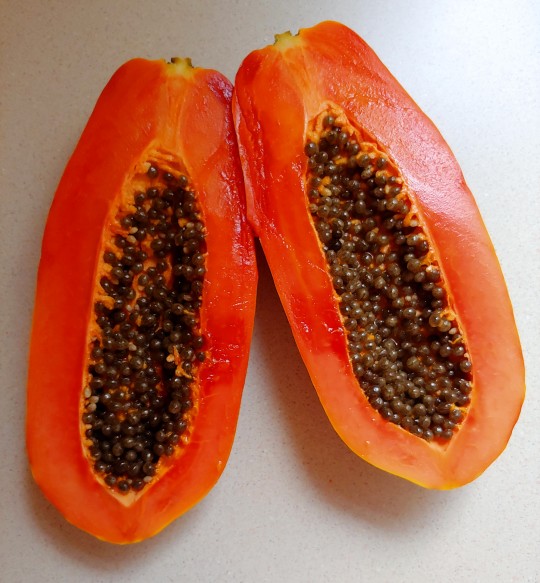
One of my favorite recipes I encountered through travel is one I first tasted in Cuba. The most traditional places to stay there are like bed & breakfasts within a family home. We loved them because we got to know the families a little and because we woke up every day to a delightful breakfast spread including fresh tropical fruits. Papaya is the favorite fruit of the friend I was traveling with, so we were thrilled to be greeted with fresh papaya most mornings.
One morning we were even more pleasantly surprised with this papaya mousse, which our host explained is an excellent way to make use of overripe papaya. Anyone who has ambitiously bought a whole papaya will understand this predicament! I loved it so much that I tried to find a recipe for it as soon as I returned home. What follows is the closest approximation I could reproduce of my memory.

Papaya Mousse Ingredients
A small handful of cashews, soaked in water for a few hours
Half of a ripe or overripe papaya, peeled, seeded, and roughly cubed
One date, pitted and roughly chopped
Salt, to taste
Cinnamon, to taste
Optional for garnish:
Shredded coconut
Pomegranate seeds
Extra (non-soaked) cashews
Chia seeds, sesame seeds...
The instructions are so simple this can hardly even be called a recipe. Just drop all the ingredients in a blender and puree until smooth. I think it tastes best super cold, so it helps if the papaya was refrigerated prior to preparation (which is likely anyway if it’s overripe). Or you can chill it for a couple hours before serving. It's super easy and a refreshing breakfast, snack, or dessert. Enjoy!

~ A
4 notes
·
View notes
Text
Oaxaca Defeated Us
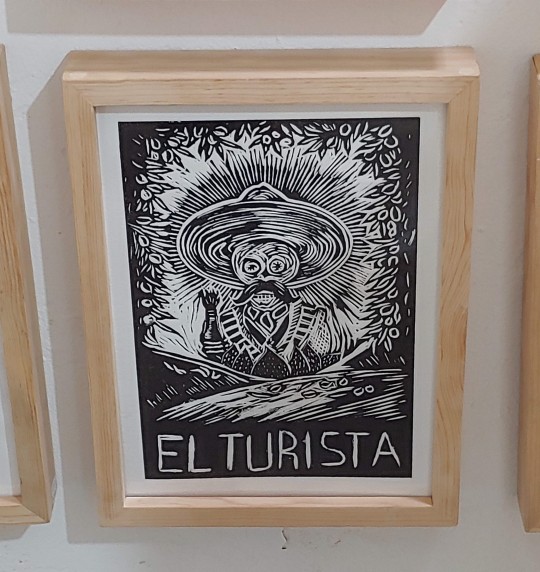
The secrets of Oaxaca are guarded closely by the locals, we admitted to ourselves as we left the city with our tails between our legs several weeks ago. Unfortunately we were not granted access to these secrets until it was a little too late. Despite our hubris at the beginning of our trip (Tim having visited before, and I had done — I thought — a fair amount of research), Oaxaca defeated us.
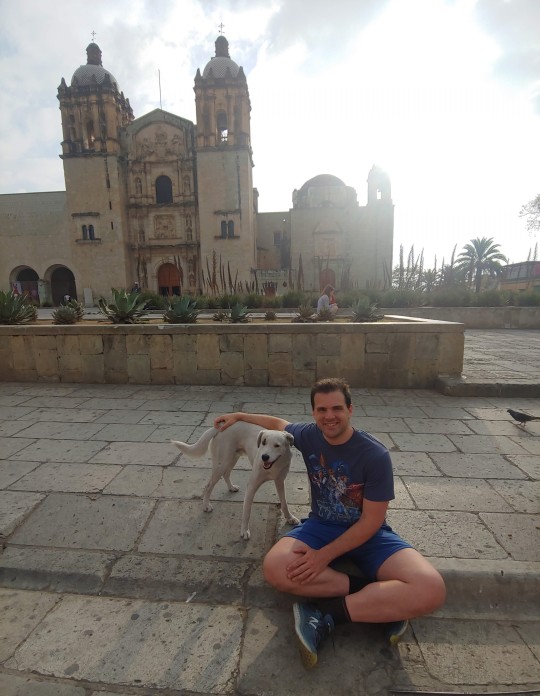
(We did go for a running tour where we made a puppy friend who followed us for the entire 6-mile route!)
Don't get me wrong; Oaxaca is a great city, and don't by any means take this post as a warning against visiting. It is definitely worth seeing and experiencing yourself. But there are already plenty of blogs out there singing Oaxaca's praises. We'll likely add to those soon as well, but we thought an honest recounting of our disappointments might be refreshing to begin with.
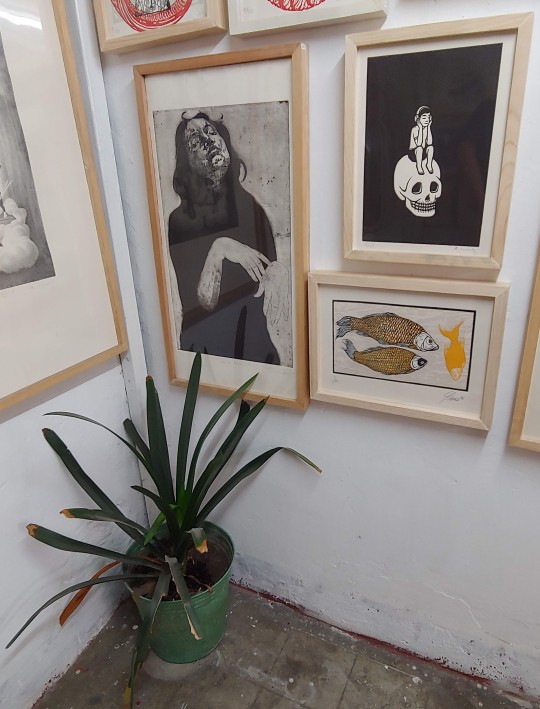
{We also went to a super cool workshop and gallery space, Espacio Zapata, founded by the art collective ASARO (Asamblea de Artistas Revolucionarios de Oaxaca).}
We don't, in any way, want to discourage anyone from visiting Oaxaca. It's a beautiful city with lots of amazing things to do, eat, and see. We were just thrown off by a few things:
So many tourists!
Restaurants were so much pricier than we're used to!
Cash only, for everything!
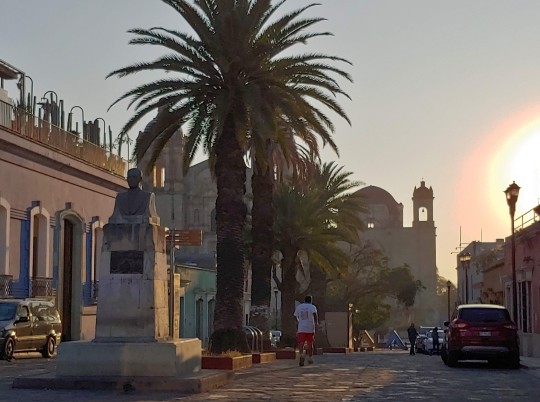
You might be thinking none of these should be particularly surprising. We are, in fact, tourists ourselves visiting a world-renowned tourist destination. And though of course we've been spoiled living in the US for so long — where no one blinks an eye when you pull out a credit card to pay for a 33-cent transaction — we've been in Mexico for more than a month now. We fully expected we'd have to get used to paying in cash here more than we were used to, and we have adapted accordingly.
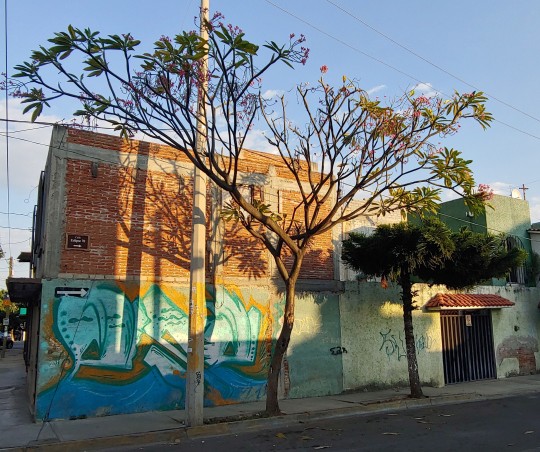
(Warm, sunny days, funky flowering trees, and street art were, thankfully, free to enjoy.)
But Mexico City has been perhaps too easy a transition for us. Yes, there are plenty of tourists, but they're concentrated in certain parts of the city we do our best to avoid. And while restaurants here are definitely a lot cheaper than in the US, our “moral economy,” as Tim puts it, has changed drastically. Now the thought of paying much more than $10 USD for a meal for the two of us seems insane. Finally, we've gotten used to paying in cash at street vendors and in mercados, but places like grocery stores (and some mercados!), museums, restaurants, bars, and movie theaters readily accept our credit cards.
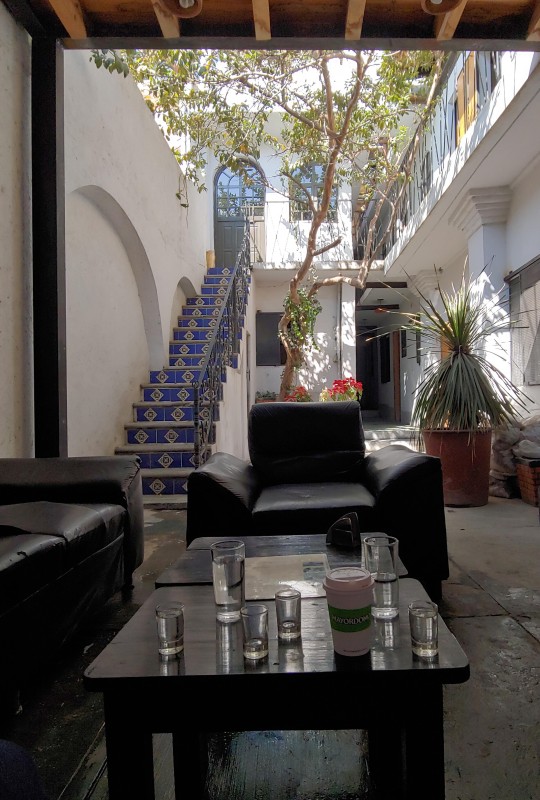
(One thing I would have loved to do was to visit a palenque, where mezcal is produced, to learn more about the process. But we settled for a visit or two to this charming mezcal bar instead.)
There are plenty of cool things to see and do outside the city, but navigating the tourist infrastructure for short excursions from Oaxaca city left us feeling like cash-strapped and ignorant gringos. It seemed the only options were ridiculously overpriced ($100+ each) guided tours or renting a private taxi FOR THE DAY. Needless to say neither of these options sat well with us. So we opted to stay within the city limits for this short trip, and to focus on experiencing daily life in Oaxaca instead. How could we go wrong in a city with so much great food and museums?
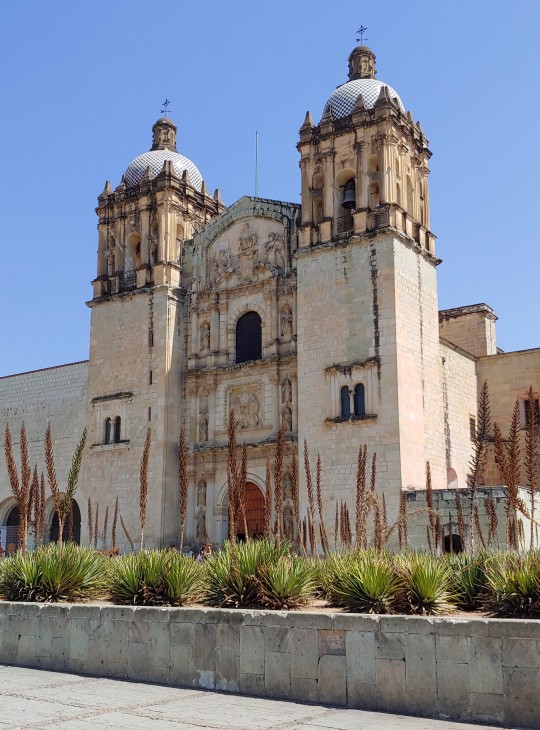
Well, for one, not bringing our ATM cards nor enough cash proved to be a good start. Trying to avoid overpriced brick-and-mortar freestanding restaurants, we had our first two big meals in mercados — usually a safe bet. Both meals, however, ended up costing us nearly $15 USD EACH. Cash only, of course.
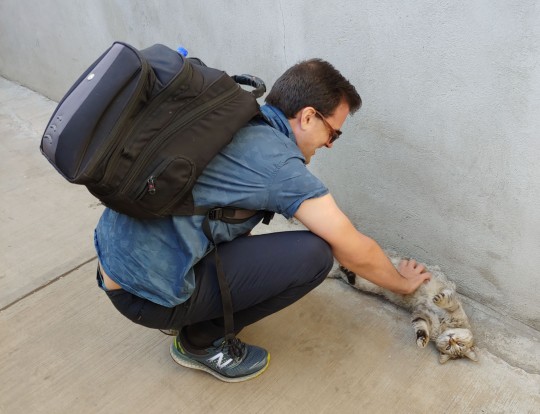
(Making friends with local furbabies was also, thankfully, free.)
Blissfully unaware as we were that it was a major national holiday weekend (as well as prime time to escape less tropical climates?), the dates for which we booked our trip were also an oversight on our part. Not only were all the main squares and plazas bustling with many more tourists than Tim remembered from his last visit but many of the museums we were excited to see were closed for the holiday on one or both of the full days we spent there. And the museums that were open required — of course — cash only, and more than we had to spare once we realized even our nicer meals would require that same cash.
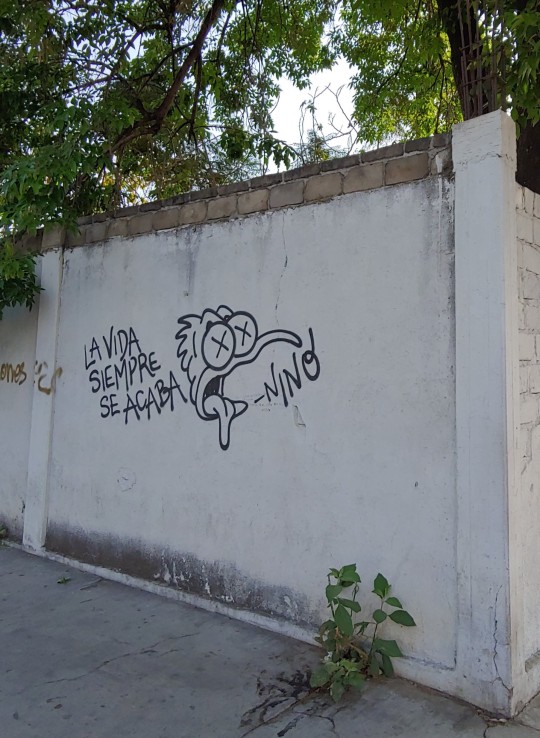
(”Life always ends.”)
It was only on our last full day, in a delightful (and unexpectedly one-on-one!) four-hour embroidery class that I took (more on that later), when we finally cracked the code for how to do Oaxaca right (for us).
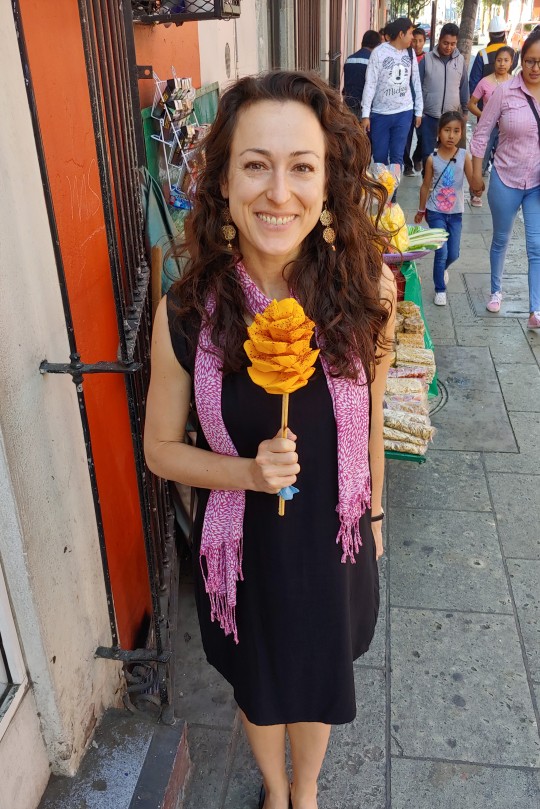
(One of my favorite street foods: an entire, artfully carved fresh mango on a stick, dipped in colored sugars and/or chili powder of your choice!)
Lessons learned:
Keep a calendar of local and national holidays for whatever country you are visiting.
Bringing extra cash and your ATM card when you travel is NEVER not a good idea.
When choosing between food vendors in an unfamiliar place always just go with the one that has a line.
Some places just aren’t designed (yet) for the thrifty gringo to experience. That’s fair. Do what you can to learn from locals, and enjoy what is available to you.
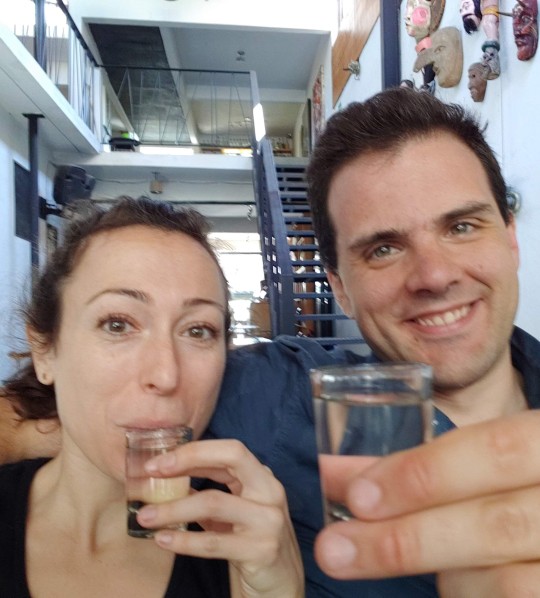
(The first and last place we visited in Oaxaca: a lovely mezcal bar that also happened to take credit cards!)
Cheers to Oaxaca and learning as we go!
~ A
1 note
·
View note
Text
Happy Expropriation Day, Mexico (/Suck It, USA)!

There are few better examples of Mexico’s political differences with the United States than the March 18 holiday simply titled Mexican Oil Expropriation Day. While “expropriation” (read: nationalization) — the boogeyman that sparked 638 (yes, you read that right) failed attempts to assassinate Fidel Castro and dozens of CIA-backed coups around the globe — is a taboo word in the US, in Mexico it remains a hallmark of national pride.
Most of the history of Mexico before 1940 can be summarized as a tale of war, corruption, foreign exploitation, and invasion. In a story familiar to anyone who has heard of the escapades of the International Monetary Fund (IMF), the World Bank, or the general legacies of colonialism in developing countries, Mexico's attempts to modernize in the late nineteenth and early twentieth century were hobbled by debt, foreign ownership, and the perfidy of the United States in particular.
(Find fun worksheets below that you can print out and color as you celebrate Expropriation Day!)

When oil was discovered in Mexico, American capitalists preyed on Mexico’s crippling need for financing by providing the cash flow to build oil wells and other infrastructure required to extract Mexico’s wealth of natural resources. In return, the ensuing profits flowed out of Mexico and into the pockets of those same American investors. By 1910, 90% of Mexico’s mineral resources, its national railroad, its oil industry, and an increasing amount of its land was owned by the United States.
This situation was just peachy as far as America was concerned, but it inspired a fair amount of outrage in Mexico. Then in the 1930s two events created the pretext for a reckoning: the Great Depression that collapsed Mexico’s export economy and the election of a firebrand socialist president named Lázaro Cárdenas. As revenues plummeted in the 1930s Mexican workers lost their jobs in droves. Cárdenas responded by nationalizing (expropriating from its previous owners) all oil wealth in 1938, creating a government-run oil company, and barring all foreign oil companies from Mexico without compensation.

Lucky for Mexico the US was too distracted at the time by Europe and the Depression to have Cárdenas assassinated or overthrown — the usual pattern of American international relations in the 1940s and ’50s. American and British oil companies did launch an embargo of Mexican oil, but their efforts were foiled when Nazi Germany gallantly opened its economy to Mexican imports. It could be said that fascism and the Depression saved Mexico from the creeping power of American-dominated international capitalism. Since then, National Expropriation Day has been enshrined as a holiday in Mexico, annually commemorating this victory for Mexican economic independence.
The messy aftermath of expropriation certainly cost Mexico millions of investment dollars and spawned decades of conflicts with grudge-holding foreign investors. But despite the consequences, this national holiday serves as a proud assertion of Mexican nationalism and — perhaps most importantly — a humiliation of the United States and American corporations. That is, naturally, a legacy all Mexicans can rejoice in. So, ¡Feliz Día de la Expropiación Petrolera (Happy Expropriation Day!) to you and yours!

~ T (& A)
3 notes
·
View notes
Video
tumblr
Here is a short video clip of the finale of the ballet folklórico performance we saw in Mexico City (see previous post for more details).
Listen for the audience clapping along with the beat as well as the occasional “gritos” from the dancers, musicians, and their fans.
Finally, watch for the rolls of paper streamers that had been surreptitiously passed out to dancers earlier in the scene. (Spoiler: There are already some on the ground from the first batch, but act surprised anyway!)
~ A
#mexico#ballet#ballet folklorico#dance#danza#cultura#folk art#bellas artes#palacio de bellas artes#cdmx#mariachis
23 notes
·
View notes
Text
Ballet Folklórico in the Palacio de Bellas Artes!
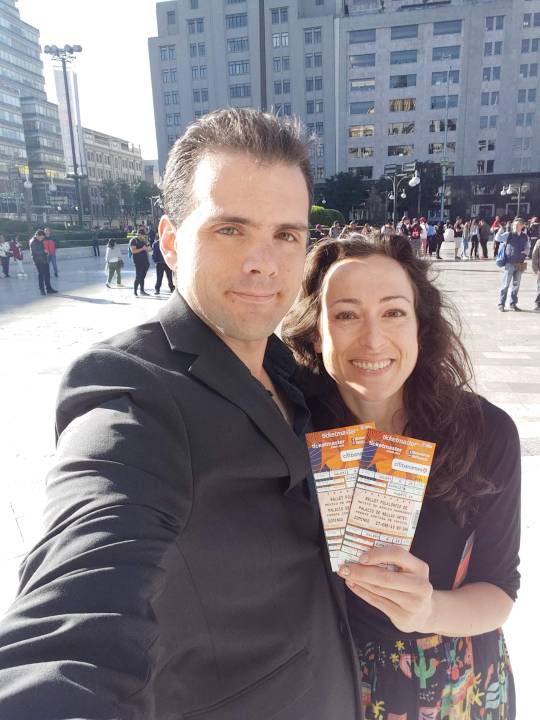
We were lucky enough to find cheap tickets to see Mexico’s national Ballet Folklórico perform in the Palacio de Bellas Artes, a lovely building in the historic center of Mexico City.
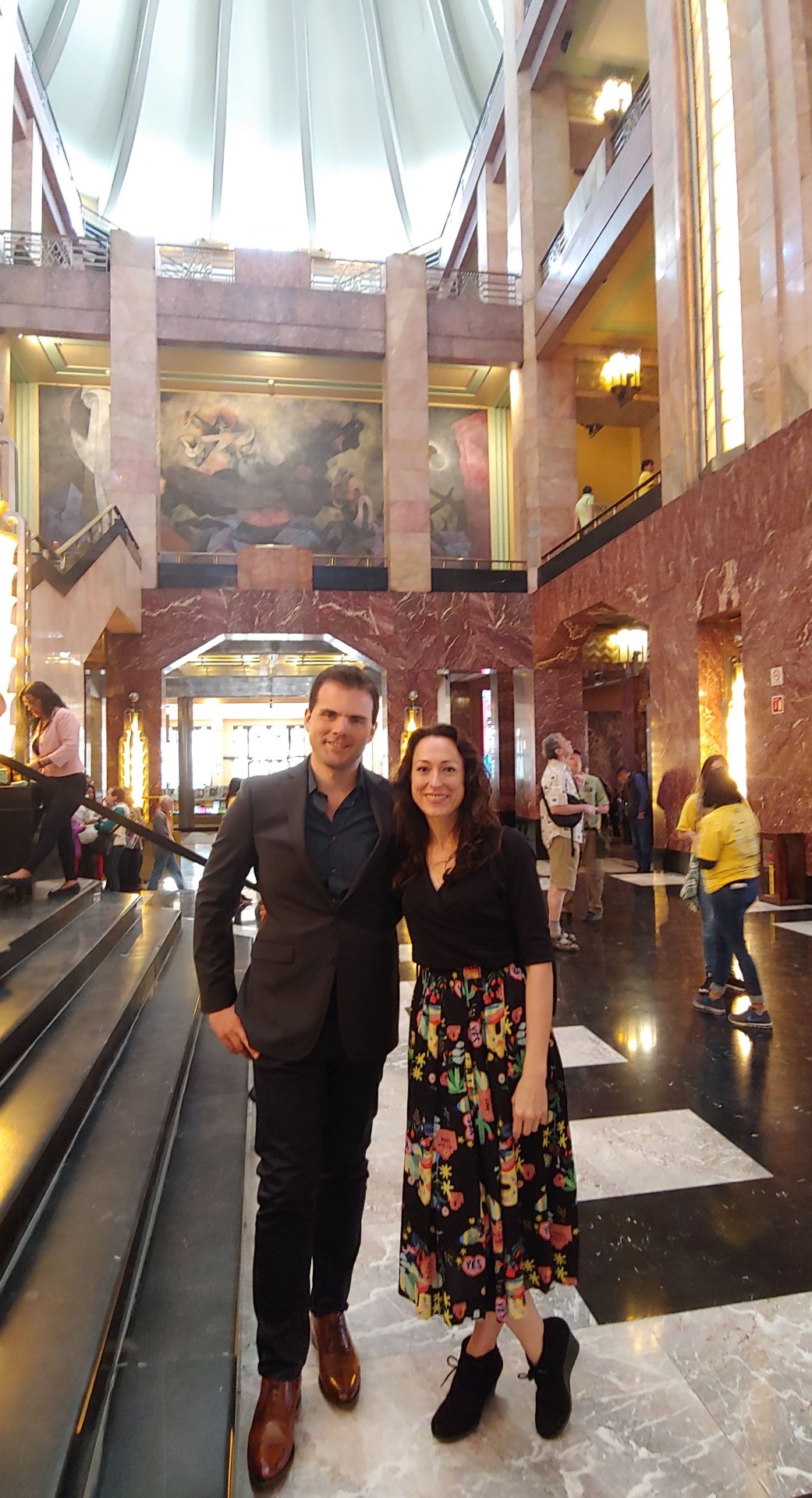
The building itself is gorgeous, with a mix of architectural and design styles.
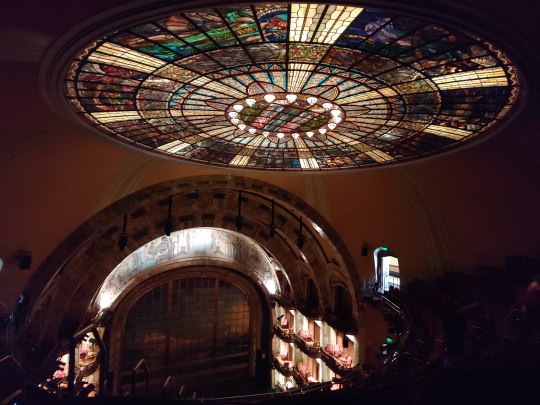
The ceiling of the theater where the performance took place is a stained-glass dome depicting the muses with Apollo.
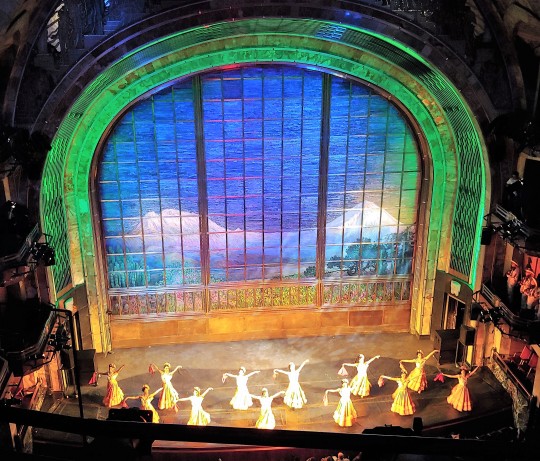
The most famed and magnificent part of the building, however, is the glass “curtain” stage background. It is the only one of its kind in any opera house in the world and weighs twenty-four tons!
The scene it portrays is a landscape by Mexican painter Gerardo Murillo Cornado, centered around the two volcanoes you can see from Mexico City. (Check out this fun legend about these two volcanoes: https://www.inside-mexico.com/the-legend-of-popocatepetl-iztaccihuatl/!)

Tiffany’s of New York constructed the folding panels according to Murillo’s design with nearly a million pieces of iridescent colored glass. The panels changed colors with the lighting throughout the show.
And then there was the performance itself.

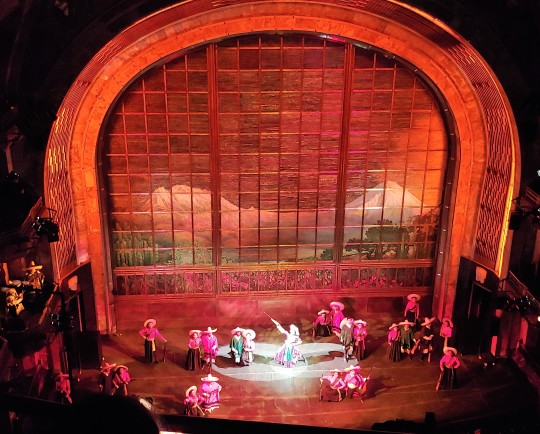
The ballet shared a variety of tales from Mexican history and Mexican culture — from the peasant revolt (highlighting women’s roles!) to a humorous wedding scene (where another man tries to steal away with the bride-to-be) to a traditional “bow tie” dance (where a bride and groom tie a long ribbon into a bow with their feet to symbolize their union) — each originating from different regions of the country.

There was even a dancing alebrije (fantastical spirit animals dear to Mexican culture) and a “battle” between dueling harpists!
All of these stories were told through a wonderful fusion of folk art and “fine art” — perhaps best illustrated through the assortment of footwear dancers wore throughout the show, from barefoot to tap shoes to en pointe!
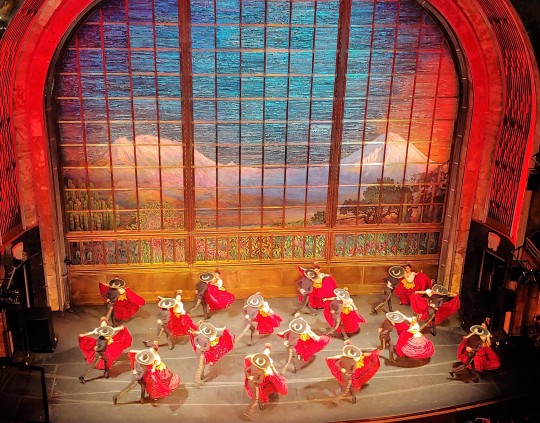
Every scene was accompanied by live mariachi bands that rotated in and out of the box seats lining the sides of the theater. Certain songs invited clapping with the beat, and audience participation was welcome. Dancers, musicians, and audience members alike occasionally burst into a spontaneous “grito” or cheer to punctuate the revelry.
See our next post for a short video we took at the performance!
~ A
#mexico#ballet folklorico#dance#danza#cultura#folk art#bellas artes#palacio de bellas artes#cdmx#mariachis
1 note
·
View note
Text
LSE Recipe 1: Tomatillo Salsa
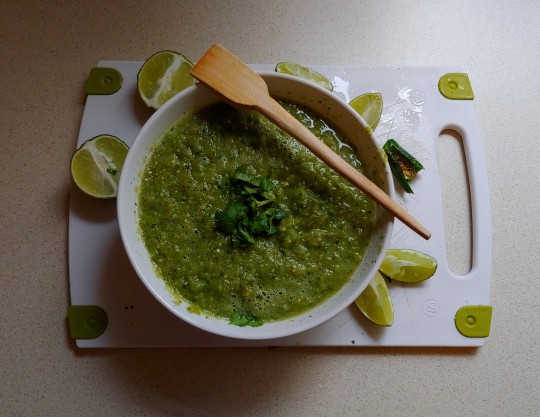
Tomatillo salsa is my favorite because it’s my favorite color, and also because it’s delicious.
Tomatillos have a tart and citrusy flavor profile, which is slightly softened by the pan scalding in the recipe below.
Unfortunately, whenever we’re presented with an array of salsas to accompany a meal in Mexico, the only salsa that is my favorite color is almost always way too spicy for me. So I’ve been learning to make my own.
I keep upping the amount of “pica” (spiciness, literally “bite”) in every batch, with the hopes that gradually I will build up to the point where I can finally eat the pretty light green salsa that makes my mouth (but also my eyes) water at countless restaurants and snack stands all around us.
Until then, I will keep trying to perfect my recipe at home. Here’s what I’ve been working with lately.
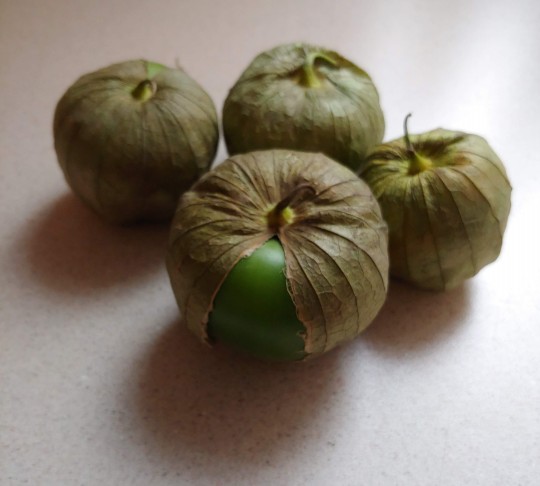
Tomatillo Salsa Ingredients
1 pound tomatillos
¼ to 1 whole serrano (or other hot) pepper (to taste)
1 or 2 large cloves of garlic (optional)
½ to 1 whole white onion, roughly chopped
Juice of 2-3 tiny limes
1 bunch cilantro
Salt and pepper, to taste
Remove husks from tomatillos and carefully rinse. The outside of de-husked tomatillos is a bit sticky, but it’s okay if it doesn’t rinse off completely.
Heat a large skillet with a bit of cooking oil over a medium-high flame. Once pan is hot, add whole tomatillos and serrano pepper (and whole garlic cloves, if using). Be careful, because the hot oil will splatter!

Fry uncovered for a few minutes just until tomatillos are browned on the bottom, then flip everything so the other side also gets browned. Don’t let the tomatillos get too soft or it will dramatically change the flavor of the salsa (too sweet and not nearly as delicious). The tomatillos should still be nearly firm but just browned on the top and bottom when you remove them from the heat.
Add tomatillos, garlic, serrano pepper (to taste) to blender. Add some onion, lime juice, cilantro leaves, salt and pepper. Blend to desired consistency. I usually taste it and add more lime, cilantro, onion, or salt and pepper as needed. And more pica (serrano pepper) if I can take it!
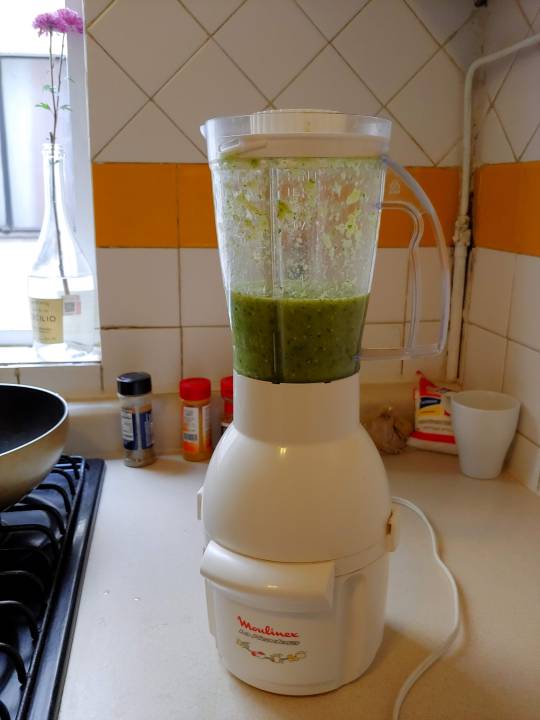
We find this salsa makes a delightful accompaniment to tortilla chips, tacos of all kinds, eggs . . . pretty much anything savory! Enjoy, and let us know if you try it out!
~ A
2 notes
·
View notes
Text
Introducing LSE Recipes

We thought it would be fun to introduce a little series on what we're eating, or — more specifically — what we're cooking. It will be a mix of local dishes we're learning and staples that we've found are relatively easy to make anywhere (so far, at least). We're calling these (aspiring) LSE (Least Shitty Expat) recipes, and we’ll use them to keep you posted on how we’re nourishing ourselves as our journey continues. Enjoy!
~ A
2 notes
·
View notes
Text
Running in CDMX
Running is my favorite sport for a lot of reasons, but I think the main one is because you can do it anywhere, anytime, and the only equipment you need is a decent pair of running shoes. (Although I had to get rid of 99% of my wardrobe in the last 24 hours of packing for this adventure, I refused to cut my second pair of running shoes. They don’t sell Brooks in Mexico!)
So once we moved into our long-term rental I laced up my shoes and went out to explore. I was curious to see what running in Mexico City was really like, since I’d read some less-than-positive things before we arrived. Here’s what I’ve learned.
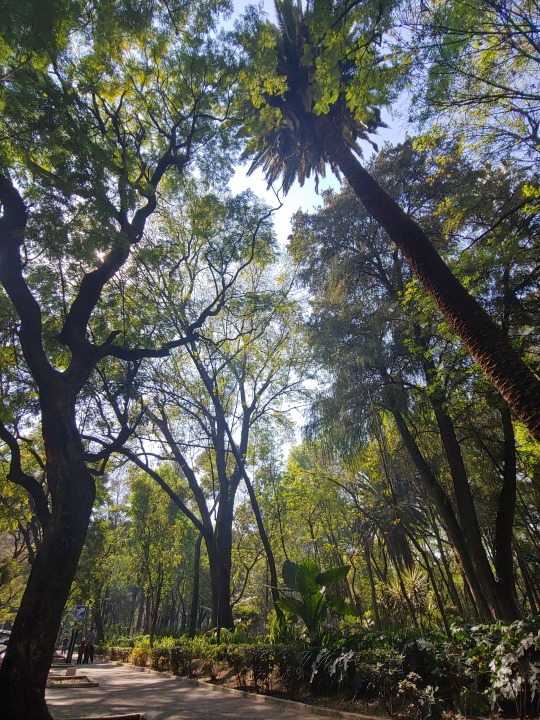
(Parque México, just a mile away!)
Air Pollution: There is a lot of traffic in Mexico City. A lot. But I have found that if you plan your route well, you can run on quiet, tree-lined streets and in beautiful parks 90% of the time, which seriously cuts down your intake of car exhaust. You’ll have to cross a main road or two with pretty much any route, but these provide great opportunities to catch your breath. Which brings me to issue number 2...
Elevation: A few runner friends warned me that Mexico City is at a very high elevation. I figured, whatever, I’ve been there before and I didn’t notice any difference. But I must not have had time to run when I was here as a tourist.
I’ve never even really paid attention to elevation, but apparently that’s because the places I’ve lived and run in made it unnecessary. For comparison, Chicago is 181 meters above sea level. NYC = 10 meters on average. Other places I’ve lived and run: Washington, DC = basically sea level; Valencia, Spain = 15 meters.
Mexico City? TWO THOUSAND TWO HUNDRED AND FIFTY METERS. Turns out, elevation is no joke for runners. The first time I ran here I was appalled at my pace. I was running an average pace of 13:30 per mile...slightly slower than my usual average of 9:00! Even in splits, if I’m lucky the closest I get to my usual range is an under-11-minute mile! And I constantly have to stop and catch my breath because the air is so thin. Luckily there are lots of pretty things to look at.
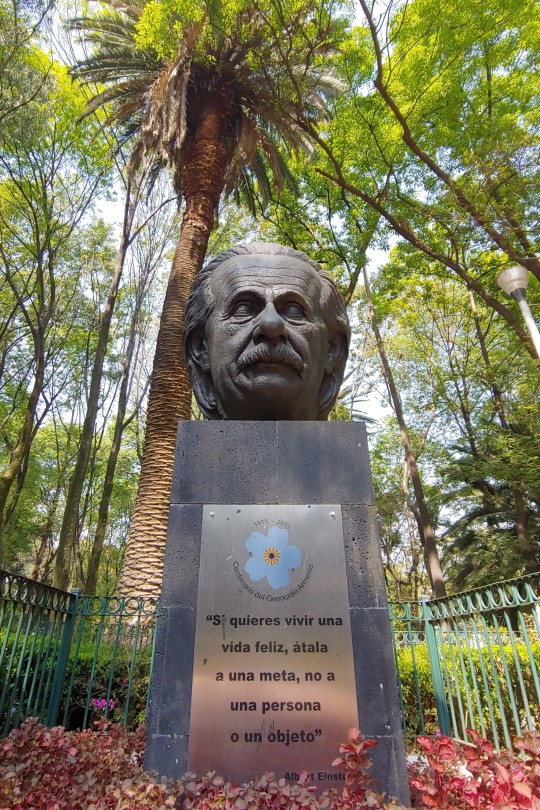
(Centennial monument to the Armenian Genocide: ”If you want to live a happy life, attach yourself to a goal, not a person or a thing.” ~ Albert Einstein)
At first I was absolutely exhausted the day after even a short (3–4 miles) run. But I already feel like it’s getting easier, and my pace is picking up little by little. So I see this part, the beginning of our trip, as a nice little challenge to remind me I can always get stronger. And I’m very much looking forward to getting back to sea level because I’m going to feel like a rock star!
Running culture: I am not and probably never will be a very social runner. But I do enjoy the feeling of solidarity I experience whenever I find there’s been at least one if not many a runner before me who has carved out a path in the dirt alongside a paved road, wet sand on the beach, or freshly fallen snow. Every time I run here — no matter what time of day, what day of the week — I see other runners out there and we share a smile or nod. I’ve seen runners of all ages and sizes, too. My favorite experience of fitness culture so far in CDMX, though, is the first time I stumbled upon Ciclovía.
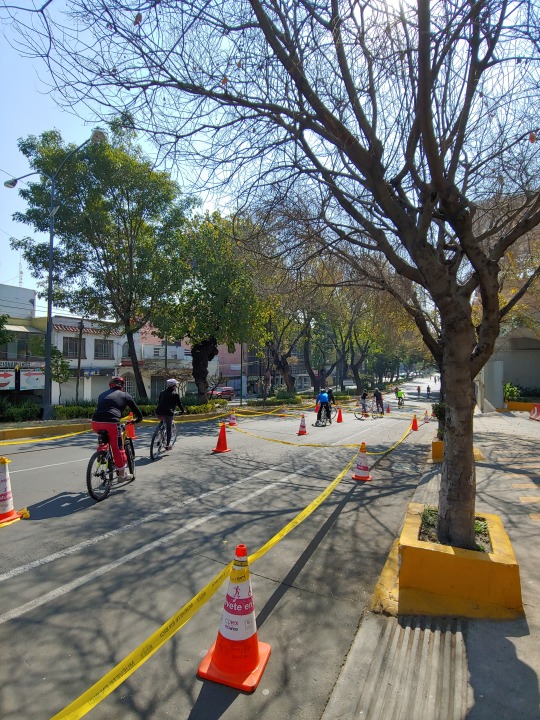
(Ciclovía right outside our apartment!)
Ciclovía is a public health/urban planning initiative that started 40 years ago as a protest against car-centric development in Bogotá, Colombia, and has since been adopted by municipal governments across Latin America. Main streets are closed to automobile traffic for several hours on given days, often Sunday mornings, and some cities have weekday or weekend evening Ciclovías as well. I knew these existed in Mexico City, but I wasn’t sure where. So imagine my delight when, our first Sunday morning in Mexico City, I went out for a run and found Ciclovía at our doorstep!
As you may gather from the title (and the above photo), Ciclovía is geared towards encouraging bicycling, but there are plenty of runners and rollerbladers out there too. It’s such a fun way to enjoy a lovely Sunday morning with your neighbors. That morning I followed the crowd and discovered a new route. I was rewarded with a new (to me) park that is ringed by a rubber running path — one of my absolute favorite things!
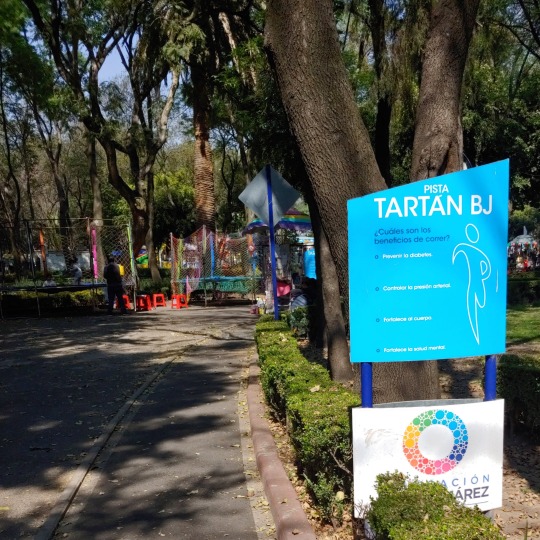
(Rubber track!!!)
So despite the challenges, I love running in CDMX as much as anywhere else. I even manage to get Tim to join me once or twice a week to show him some of my favorite things I’ve discovered. I’ll keep sharing them with you as well.
~ A
4 notes
·
View notes
Text
A Weekend in Puebla
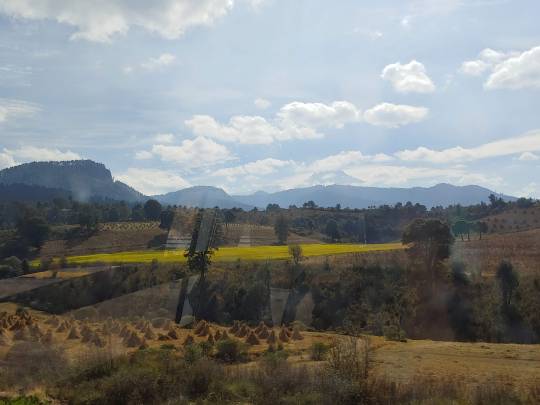
(view from the road)
Puebla is a small city two hours from CDMX by bus. It was built in the 1600s as an experimental commune by the Spanish to motivate indolent conquistadors to farm and support themselves instead of enslaving and brutalizing the local indigenous peoples.

The commune idea never took root, but Puebla grew into a Mexican vacation spot famous for its artisanry, its food, and its geography — including a nearby active volcano (the world's smallest!) and pyramid ruins (the world's largest, by volume!).
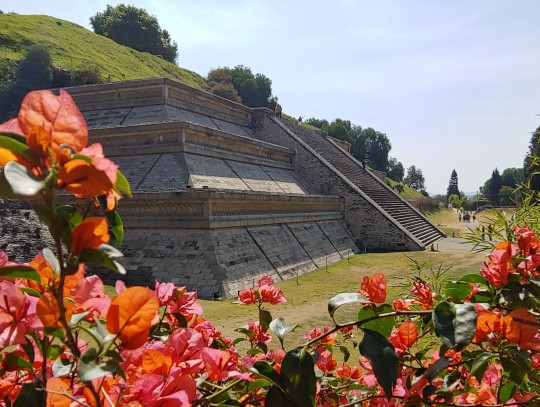
Puebla is like a cross between a trendy, young city and the kind of place your mom would want to go on vacation. The streets are dotted with markets and vendors hawking embroidery, earthen kitchenware, and sartorial accoutrements for women of taste. But, on the other hand, it's also a university town that's filled with attractive twentysomethings who drink, make out, and play music on every other corner. There's a little something for everyone here, although there are a few moments where partners may want to part ways to allow for a little personal shopping/downtime....
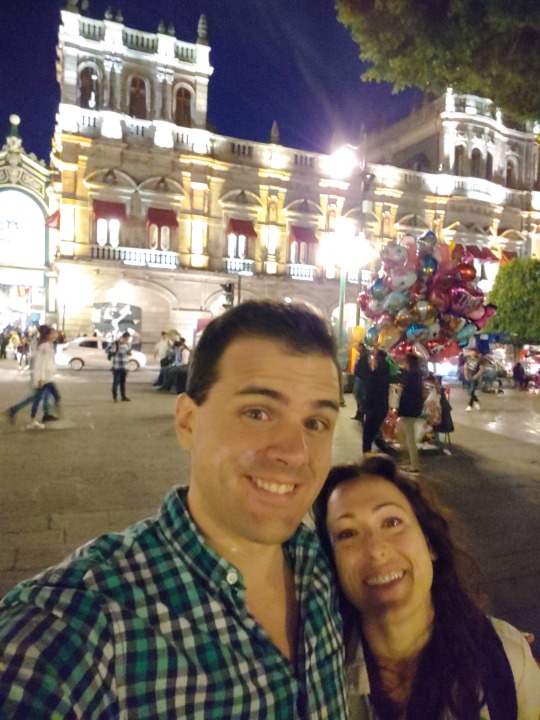
In the evenings, crowds of Mexican tourists and young people pack into the squares and plazas to eat every imaginable kind of street food (with lines of people of all ages snaking around one particular block for freshly fried late-night churros) and to drink beer, tequila, or pulque. It's a hip place, but there's only a smattering of foreigners here. Puebla is a place Mexicans go to party and to shop.
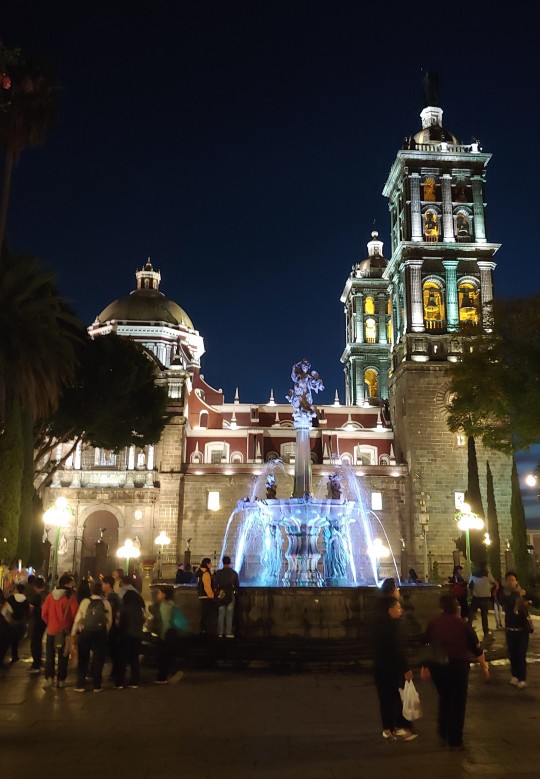
For us, the real charm of the city is its unique flair when it comes to food and drink (and folk art! — more to come on that). There are backroom bars that serve the viscous, milky, fermented drink known as pulque (which deserves a post of its own) in gigantic wooden mugs or Styrofoam roadies.
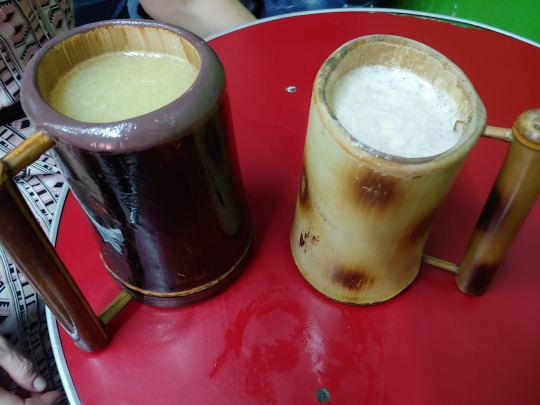
The food is all about the mole. While Puebla’s claim to be the birthplace of mole is disputed [Oaxaca is likely the true madre de mole (more on that later)], there’s no denying that eating pools of sweet, spicy mole off of the traditional blue, hand-painted Talavera dishes as part of a four-course dinner that costs less than a Happy Meal is pretty freaking awesome.

~ T (& A)
1 note
·
View note
Text
If You Want to Live in Mexico, Learn to Speak Mexican
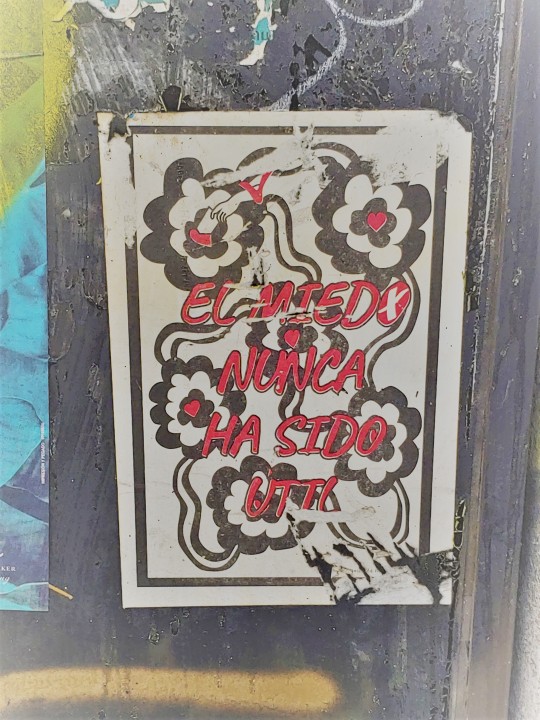
(”FEAR HAS NEVER BEEN USEFUL”)
The biggest misconception I ever heard about living in Mexico is the following statement:
“Tons of people speak English in Mexico City! You’ll be able to get by okay without speaking Spanish.”
This idea is true enough if you’re staying in a hotel and visiting tourist sites like Teotihuacan, where guides and employees actively make money from tourism and need to speak some English. But mark our words: No one outside of a hotel, major tourist site, or occasional Airbnb is going to speak to you in English in Mexico. Even if they do speak some English, they are not going to fumble through a conversation with you for the privilege of selling you a torta. Take a page from patriotic American nationalists and adjust your expectations: If you want to live in Mexico, learn to speak at least some Spanish.
youtube
Now it is perhaps worth noting that I, as a Canadian man with an overly-focused arts education, do not speak Spanish. Hypocrite, you say? Well I have a couple of secret weapons: 1) a girlfriend who is fluent and 2) a positive attitude to learning. Alison takes the lead in conversations and I follow along and contribute as best I can to force myself to learn a little bit at a time. My victories are humble, but I cherish each “cuanto cuesta,” “permiso,” and “gracias.” My proudest accomplishment this week went as follows:
¿Tiene queso? No. [Words I didn’t understand....] Gracias.
Baby steps....
~ T
0 notes
Text
The Video Game Markets & “Barcades” of CDMX
Mexico City (CDMX) is a city of indoor markets, or mercados. While the word “market” might conjure images of food courts or flea markets to an English speaker, Mexican mercados are a cross between a shopping mall and an old-world bazaar. You can find everything from handmade baskets to bloody-handed butchers doling out sausage alongside gourmet coffee stands and vendors selling clothespins, fresh flower arrangements, toys, spices, and garbage bags.
Every mercado worthy of the name also features a dozen or so prepared-food vendors, from sit-down restaurants serving multi-course meals to quick-serve counters to snack carts offering a rich assortment of sweet and savory treats. Western-style grocery stores are also available and provide a more organized and antiseptic environment, but the mercados are cheaper and livelier. You can essentially buy everything you would ever need at the mercado, and many Mexicans do.
Throughout the city there are also more-focused markets that cater to particular hobbies and interests. One of the most vibrant and unusual is the video game market. In Mexico, video games are imported products and often cost double the price of what you would find in the States or Canada, in the range of $100 USD for one game. The video game consoles are even more cost-prohibitive, so owning them is outside the reach of many people here. As a result, we’ve discovered, used-video-game markets are part of the culture of the city.
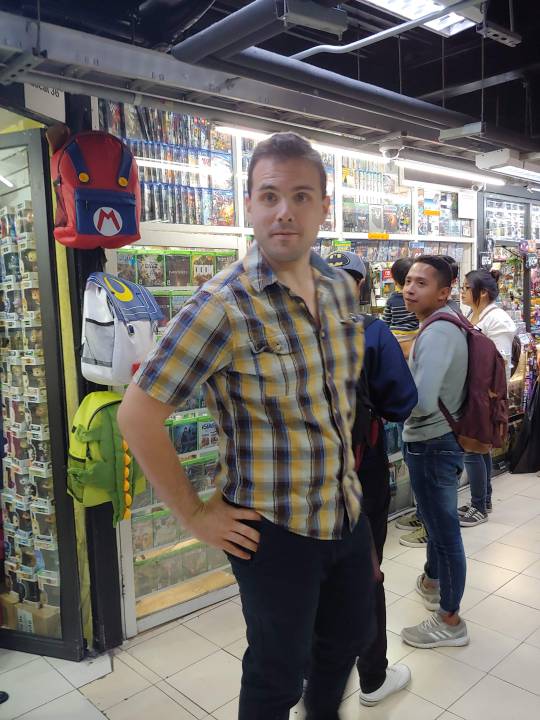
We recently visited one market downtown that is six stories high, with the top five floors dedicated to video games and anime. Each floor is packed with dozens of vendors advertising both modern titles and a massive array of old games. Nintendo, always cheaper than Sony, seems to hold a special place at the market, with Nintendo 64 and handheld games widely available and relatively cheap. While nostalgic video gaming is certainly becoming popular in the English-speaking world, in Mexico Nintendo still seems to be king.

The entire top floor of the market is dedicated to another institution all-but gone in the United States: the arcade. Arcade bars and arcade food courts are places where Mexican teenagers gather to play new and old games that their northern brethren play at home. Surrounding a bafflingly placed dance stage and beneath a balcony of restaurant vendors, we witnessed teenagers playing Super Smash Bros., Mario Kart, and Mortal Kombat for 20 pesos (about $1 USD) an hour. (Alison can be seen patiently waiting at a picnic table in the center while Tim bounced around gleefully.)

In our home neighborhood, we were delighted to discover a (slightly) more mature “barcade” called Taco Game that offers 2 hours of emulated Nintendo 64, SNES, or PS4 play with the purchase of a food and drink item per person. So we decided to check it out for our first “date night” as temporary residents of Mexico. For the cost of a plate of nachos, a slice of lime pie, a guava soda, and a Mexican beer (about $10 USD total), the bartender brought us two vintage N64 controllers and fired up the system, allowing us two hours to play GoldenEye, Mario Kart, etc. to our hearts’ content.
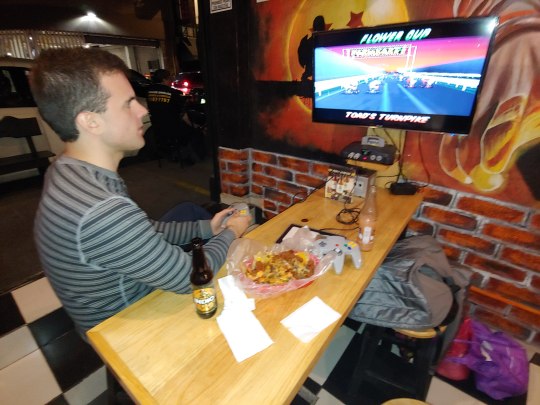
~ T & A
0 notes
Text
The Least-Shitty-Expat Creed

We both think it’s good to be a bit embarrassed to be an expat.
An immigrant is somebody who comes to a country for opportunity and integrates into that society, contributing to its wealth and intellectual resources.
An expat is essentially an entitled refugee with money.
We’re a class of people who travel the earth because we have the privilege and leisure to not need to stay in our homeland and eke out a conventional living like the vast majority of the world’s people. We spend money in the countries we visit, but we also take resources and land from the people who need to live here, as well as reshape the local economy to cater to our lifestyle. Our general role in society isn’t all that different from the white colonizers who preceded us in many places three or four generations ago.
The only answer we can think of to mitigate the essential shittiness of the expat lifestyle is try to treat the local society we’re leeching off of with as much respect, admiration, and humility as possible. Here are a few commandments we strive to live by — the Least-Shitty-Expat Creed:
Make every effort to speak the local language, and never expect people to speak yours.
Don’t mock or tease locals — even in private — because you find their culture strange or because they don’t always have the resources you’re accustomed to in your home country.
Never forget the historical trauma your home country has caused nor the role it continues to play in the destruction of political, economic, and ecological structures of your host country. It is largely if not exclusively this destruction that has created the status quo that allows you to live cheaply in your host country and prevents many of its locals from freely accessing the resources you are accustomed to.
Always approach a new country with the expectation that they have discovered amazing ways to eat, work, travel, and live that you can and should learn from.
Do not let bad experiences make you cynical. Fight the instinctive urge to stereotype an entire country or population on the basis of a single negative incident.
Remember that you have no innate right to be here and are a guest of the local people, who tolerate you because they’re warm-hearted and wonderful.
~ T & A
1 note
·
View note
Photo

Mexico City Is Sinking
We recently learned on a tour of Mexico City’s Metropolitan Cathedral that Mexico City is sinking, and fast. For a point of comparison, Venice is sinking about half an inch a year, a rate that’s significant enough to make international news. Mexico City, however, is sinking around 8 inches annually in some areas. In the photo above that Alison took on our tour, you can see the old city has sunk meters below the raised platform of the current city
Of course, the problem with a sinking city is it doesn’t sink evenly. All over the city, buildings visibly lean and tilt. Heavy and old buildings wobble and start to collapse, with colonial churches and buildings serving as the first victims. The Cathedral is no exception and is noticeably sliding to one side. It’s only a matter of time — years, decades, or centuries — before the signature monument of Spanish Mexico comes tumbling down.
The cause of all these headaches is water, soil, and human (or colonial) stupidity. When the Spanish came to Tenochtitlan, they discovered a city built on top of a shallow lake named Texcoco. The Aztecs built their implausible capital city on artificial islands that housed structures made of light volcanic rock. The miraculous water city was suitable for 250,000 people, but when the Spanish razed the city they drained the lake and decided to build their new European capital on the recently dried lakebed. Building a city on the graves of their enemies would show the New World that the Spanish had replaced the Aztecs as the rulers of Mexico!
The only problem is a former lakebed is an absurd place to build a city. Mexico City is prone to floods and the soft clay and lava rock beneath the streets can’t hold large structures permanently. As the groundwater has been depleted, the city is turning into a series of lumpy hills. One day, every trace of the Spanish era will be wiped away, except for the ecological foolhardiness of the city itself.
Better see it while it lasts….
~ T
5 notes
·
View notes
Photo
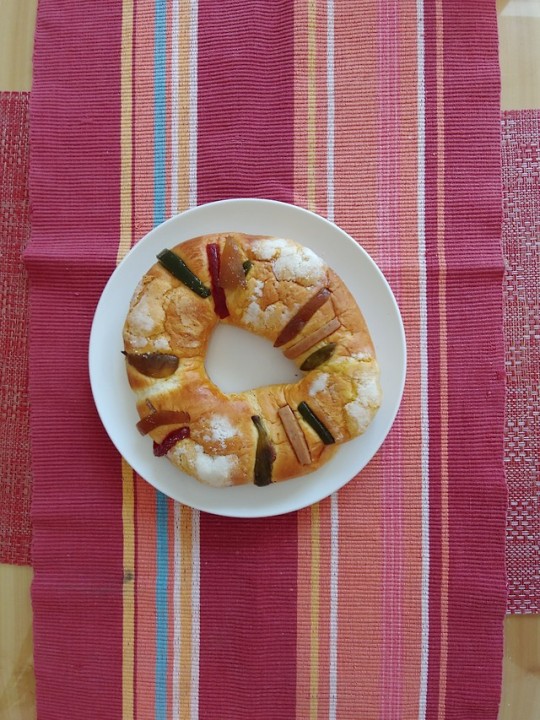
Epiphany + Cake
In our first few days here in Mexico City, we noticed these cakes popping up in every bakery. They ranged in size from the small one you see here on a dinner plate to massive versions probably three feet in diameter. We bought one, because it seemed like something we must do. The baker at the panaderia (bakery) we bought it from told us it was a rosca de reyes cake for the holiday this weekend. The only holiday we could think of was Three Kings Day. Intrigued, we looked it up.
Turns out these cakes — made of sweet bread and decorated with slices of dried fruit and powdered sugar — are traditionally eaten at gatherings in homes and workplaces throughout the country in the days before and after January 6 to celebrate the Dia de los Reyes, also known as Three Kings Day or the Day of the Epiphany.
The city government usually distributes free rosca de reyes cake in the city’s main square, the Zócalo. This year they gave out 60,000 pieces of cake and extended their distribution to more than 30 sites around the city: “Este año, además de la tradicional rosca en el Zócalo, estaremos acercándonos a diversas zonas de la ciudad, las más alejadas y en situación de vulnerabilidad, para que también puedan disfrutar de esta tradición.” (This year, besides the traditional rosca in the Zócalo, we are bringing the cake closer to diverse areas of the city, the farthest and most vulnerable communities, so that everyone can enjoy this tradition.)
In my googling I also learned that there is a surprise baked into the cake. So last night, on the evening when families usually enjoy their roscas at home, we sat down with what remained of ours and dipped it in hot chocolate as the locals do. The surprise — a plastic doll representing the baby Jesus — turned up in my last slice! What does that mean? Well, it is considered good luck to find the baby in your slice…but it also means you’re “required” to pay for a party, with the same people, on February 2 for Candlemas. What is Candlemas? TBD… Will Tim remember that I’m “required” to pay for this party? TBD…

~ A
1 note
·
View note
Photo

Making Friends!
The place we stayed for our first few days was right across the street from a local market. We had a lot of fun exploring the market every day, buying groceries and trying food at the small restaurant counters.
We were thrilled to meet a little gatito (kitten) basking in the sunshine outside the market on our first day. We both have a soft spot for kittens, and this one posed for a glamour shot and allowed us to pet it.
Another fun encounter happened as we were leaving the market the next day. There were some local kids playing soccer right outside the door. As we exited the building the ball came straight to me, so I kicked it back. At first the kids groaned, because it was all of them against one goalie and I had helped the goalie. But then they asked me, “¿Quieres jugar?” (”Do you want to play with us?”) It was so sweet, but we were on our way to meet a local guide for a walking tour. So I told them I’d love to but unfortunately we don’t have time today. It made me miss my nephews especially, because they could be friends! Soccer (futbol) is a universal language. :)
~ A
0 notes
Photo
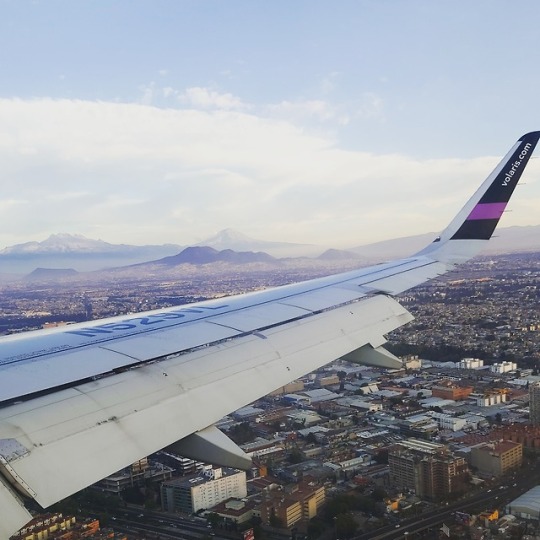


¡Hola, Ciudad de México!
On December 31, we arrived at our first destination: Mexico City! We spent the first few days downtown to ring in the new year. It was a perfect mini vacation to transition to our new life. We did some sightseeing, some shopping in local markets, lots of eating, and met some really great people. So far, we’re loving it!
High temps in the mid 70s every day, abundant sunshine, mountains at the end of every street, super friendly people, delicious insanely cheap food everywhere...what more could we need? We miss you all, but we will do our best to keep you posted with little snippets of our experiences through this blog. Stay tuned!
~ A
0 notes